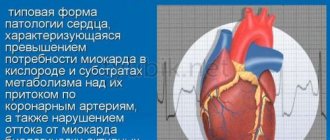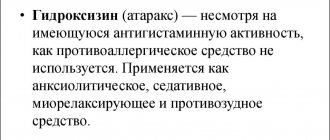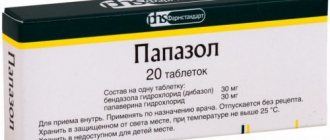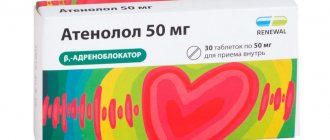Pharmacodynamics and pharmacokinetics
The active substance is diazepam , belongs to the class of benzodiazepines . The drug has anticonvulsant, sedative-hypnotic, central muscle relaxant effects. The principle of action is based on stimulation of benzodiazepine receptors. The anxiolytic effect is ensured by the effect of the drug on the amygdala complex, located in the limbic system. The medication reduces the severity of feelings of fear, concern, anxiety, and emotional stress. Thanks to the effect on the nonspecific nuclei of the thalamus and the reticular formation in the brain stem, a sedative effect , and the severity of symptoms of neurotic origin (fear, anxiety) is reduced.
Inhibition of the cells of the reticular formation in the brain stem provides a hypnotic effect . Increased presynaptic inhibition causes an anticonvulsant effect. The medication suppresses the spread of epileptogenic activity without affecting the excited state of the lesion. Inhibition of polysynaptic afferent, spinal inhibitory pathways causes a muscle relaxant effect of central origin.
The drug can cause a drop in blood pressure and expand the lumen of the coronary vessels. Sibazon increases the threshold of pain sensitivity. The medication is able to suppress parasympathetic, sympathoadrenal and vestibular paroxysms. The drug reduces the production of gastric juice at night.
The effectiveness of the drug is recorded on days 2-7 of therapy. In chronic alcoholism and withdrawal syndrome, diazepam reduces the severity of negativism , tremor , agitation, hallucinations , and alcoholic delirium. In patients with arrhythmias, cardialgia , paresthesia, the therapeutic effect is observed by the end of the first week.
Story
The drug was invented by Leo Sternbach from the Hoffmann-La Roche company. It appeared on the market in 1963 and immediately gained great popularity. From 1969 to 1982, diazepam had the largest sales of any pharmaceutical product in the United States. In 1978, a record amount of it was sold - 2.3 billion tablets. Drugs of the benzodiazipam group are widely used for non-medical purposes: according to studies in 2011, there were 28.7% of them. According to this indicator, they are second only to opiates. For example, in Sweden, diazepam was found in the blood of drivers in 26% of cases of drunk driving, and in Northern Ireland this figure reached 87%.[4]
Indications for use
Instructions for use of Sibazon are recommended to prescribe the drug for all forms of anxiety disorders.
The drug is effective for insomnia , dysphoria (combination therapy), spastic conditions (against the background of damage to the brain, spinal cord: athetosis, cerebral palsy , tetanus), spasm of skeletal muscles, rheumatic pelvispondyloarthritis, arthritis, bursitis, myositis, progressive chronic polyarthritis , vertebral syndrome, tension headache, angina pectoris.
The medication is prescribed for alcohol withdrawal syndrome: agitation, tension, anxiety, transient reactive states, tremor. For psychosomatic disorders in gynecological practice, for gestosis, status epilepticus, peptic ulcer of the digestive system, arterial hypertension, eczema, the drug is prescribed as part of complex therapy.
The drug is used for drug poisoning, Meniere's disease , as a premedication before endoscopic intervention, surgical treatment under general anesthesia.
The drug is used to relieve epileptic seizures, paranoid-hallucinatory states , motor agitation in psychiatric and neurological practice, with premature placental abruption, to facilitate labor.
Application
Diazepam tablets 2 mg
Diazepam is prescribed for various neuropsychic diseases: neuroses, personality disorders (psychopathy), as well as neurosis-like and psychopath-like conditions, schizophrenia, organic brain lesions, including cerebrovascular diseases, somatic diseases accompanied by signs of emotional stress, anxiety, fear, increased irritability, senesto-hypochondriacal, obsessive and phobic disorders, and sleep disorders. It is also used to relieve psychomotor agitation and agitation in these diseases.
It has a general anxiolytic (anti-anxiety) effect, which manifests itself in relieving emotional stress, suppressing feelings of anxiety, worry and fear [1].
In pediatric psychoneurological practice, diazepam is prescribed for neurotic and neurosis-like conditions, accompanied by the phenomena listed above, as well as headaches, enuresis, mood and behavior disorders.
Diazepam is used for epilepsy to treat convulsive paroxysms, mental equivalents, and to relieve status epilepticus. Due to its muscle relaxant effect, the drug is also used for various spastic conditions.
Diazepam is prescribed in combination with other drugs to treat withdrawal symptoms in alcoholism.
In anesthesiological practice it is used for preoperative preparation of patients.
In dermatological practice it is used for itchy dermatoses.
The drug reduces the nocturnal secretion of gastric juice, which can play an important role when prescribing it as a sedative and hypnotic to patients with gastric ulcers
The drug also has an antiarrhythmic effect.
Diazepam is used for premedication and ataralgesia before endoscopy and surgery in combination with analgesics and other neurotropic drugs.
Diazepam is an integral part of the sleeping pill reladorm (see Cyclobarbital).
Diazepam is administered orally, intravenously or intramuscularly. The sedative effect is observed within a few minutes after intravenous and 30-40 minutes after intramuscular administration of diazepam, the therapeutic effect occurs after 3-10 days. After the acute manifestations of the disease are relieved, diazepam is prescribed orally.
Possible complications, contraindications and precautions are basically the same as for chlozepid. With intravenous administration of diazepam solution, local inflammatory processes may be observed, and therefore it is recommended to change the site of administration of the drug. Diazepam has a teratogenic effect: when used during pregnancy, the fetus may develop hypothermia, hypotension, bifurcation and limb abnormalities [2]; depression of the central nervous system in the fetus (lasting up to several days), respiratory depression, apnea, risk of aspiration, increased jaundice are also possible. A single dose of diazepam (up to 20 mg) is harmless to the fetus, but with large doses and repeated administration of the drug, a toxic effect may develop [3]: 84.
Contraindications
Sibazon is not prescribed for diazepam intolerance, acute intoxication with other medications, acute alcohol intoxication with damage to vital organs, closed-angle glaucoma, myasthenia gravis, pregnancy, severe COPD, absence seizure, acute respiratory failure, breastfeeding.
For elderly people, with a history of epileptic seizures and epilepsy, with spinal and cerebral ataxia, with liver or kidney failure, with organic diseases of the brain, with sleep apnea , a tendency to abuse psychoactive medications, with a history of drug dependence, Sibazon is prescribed with caution .
Side effects
The use of Sibazon, especially at the initial stage of treatment, can cause various adverse reactions.
Nervous system: ataxia , decreased ability to concentrate, poor coordination of movements, disorientation , dullness of emotions, fatigue, dizziness, drowsiness, slow speed of motor and mental reactions, gait instability, anterograde amnesia , euphoria , catalepsy, depressed mood, tremor of the limbs, depressive mood, weakness, confusion, euphoria, myasthenia gravis during the day, headache, paradoxical reactions, dysarthria , hyporeflexia , irritability, acute agitation, hallucinations, muscle spasms, suicidal tendencies, fear, psychomotor agitation, outbursts of aggression, insomnia, anxiety, uncontrolled body movements.
Digestive tract: decreased appetite, vomiting, nausea, dry mouth, constipation, jaundice, increased levels of liver enzymes, hypersalivation .
Hematopoietic organs: neutropenia, leukopenia, anemia, agranulocytosis , thrombocytopenia.
Cardiovascular system: with parenteral administration, a drop in blood pressure, tachycardia, and palpitations are noted.
Genitourinary system: dysmenorrhea , impaired libido, disturbances in the renal system, urinary retention.
It is possible to develop allergic reactions in the form of itching and rashes.
Description of the effect of the drug Sibazon on the fetus when treating the mother during pregnancy: suppression of the sucking reflex in newborns, disturbances in the respiratory system.
Venous thrombosis or phlebitis, swelling and redness at the injection site may develop at the injection site.
Other reactions: visual disturbances in the form of diplopia , weight loss, dysfunction of external respiration, depression of the respiratory center, bulimia, weight loss.
When the medication is abruptly discontinued or the dose is reduced, a “withdrawal” syndrome develops, which is manifested by anxiety, irritability, depression, increased sweating, depersonalization , dysphoria, sleep disturbance, nervousness, spasm of smooth muscle tissue, acute psychosis, hallucinations, convulsions, sleep disturbance, headache, hyperacusis, photophobia, paresthesia, perceptual disorder, tremor.
hypothermia , and muscle hypotension are observed in premature and full-term infants
Instructions for use of Sibazon (Method and dosage)
The drug is prescribed orally, as well as intravenously, intramuscular injections of Sibazon, the instructions for use also include complex therapy with solution and tablets.
The dosage of the drug is carried out depending on the sensitivity to the drug, the clinical picture, and individual reaction.
In psychiatric practice: for phobias, states of dysphoria, hypochondriacal and hysterical reactions, neuroses, the medication is prescribed 2-3 times a day, 5-10 mg.
As an anxiolytic, diazepam is taken 2-4 times a day, 2.5-10 mg. In some cases, the amount of the drug can be increased to 60 mg per day.
In case of alcohol withdrawal syndrome, the drug is prescribed on the first day 3-4 times at a dose of 10 mg, then the amount of medication is halved.
For patients with atherosclerosis, the elderly and those with weakened immune systems, diazepam is prescribed twice a day, 2 mg.
In neurological practice, for degenerative diseases and spastic conditions of central origin, Sibazon is taken 2-3 times a day, 5-10 mg.
In rheumatology and cardiology: for arterial hypertension - 2-3 times a day, 2-5 mg, for angina - 2-3 times a day, 2-5 mg, for vertebral syndrome - 4 times a day, 10 mg.
The drug is used as part of complex therapy in the treatment of myocardial infarction: initial dosage – 10 mg intramuscularly, then 5-10 mg orally 1-3 times a day.
During defibrillation, the drug is administered as a premedication in separate doses intravenously, slowly, 10-30 mg.
For spastic conditions of rheumatic origin and for vertebral syndrome: the initial amount of the drug is 10 mg intramuscularly, then 5 mg orally 1-4 times a day.
In gynecological practice and obstetrics: for menstrual and menopausal disorders, for psychosomatic pathology, gestosis, it is recommended to take 2-5 mg of diazepam 2-3 times a day.
The initial dose for preeclampsia is 10-20 mg intravenously, followed by oral administration three times a day, 5-10 mg.
Continuous treatment is carried out for premature placental abruption until the fetus fully matures.
Premedication in surgical practice and anesthesiology: before surgery, give 10-20 mg of diazepam.
Pediatrics: for spastic conditions of central origin, for reactive and psychosomatic disorders, the amount of the drug is increased gradually.
For severe repeated epileptic seizures and status epilepticus, Sibazon is taken parenterally: for children under five years of age, slowly intravenously 0.2-0.5 mg every 2-5 minutes, maximum 5 mg.
For spinal cord injuries accompanied by hemiplegia or paraplegia, for chorea, the drug is administered intramuscularly at 10-20 mg.
For motor excitation, the drug is prescribed intravenously or intramuscularly three times a day, 10-20 mg.
To relieve muscle spasms (severe form), the drug is administered intravenously in a single dose of 10 mg.
Sibazon, 5 mg, tablets, 20 pcs.
Inside, intravenously, intramuscularly.
Pills.
The dose of the drug is selected individually, and it is necessary to take into account both the patient’s condition and the response to treatment - only general instructions are given below. At the beginning of therapy, it is recommended to use small doses of the drug with a gradual increase. It is necessary to divide the daily dose into 2-4 doses individually. It is advisable to take 2/3 of the daily dose in the evening.
Adults, neurological disorders, psychosomatic diseases, anxiety-phobic disorders:
the usual single dose is 2.5–5 mg (1/2–1 tablet). The average daily dose for adults is 5–20 mg.
A single dose should not exceed 10 mg.
Symptomatic treatment of convulsive syndrome:
usually 2.5–10 mg (1/2–2 tablets) 2–4 times a day.
In the complex treatment of mental disorders of organic origin:
initial dose - 20-40 mg (4-8 tablets) per day, daily maintenance dose - 15-20 mg (3-4 tablets).
Muscle contractures, spasticity, rigidity
- 5–20 mg (1–4 tablets) per day.
In elderly and cachectic patients,
and also with a decrease in liver function, the elimination of Seduxen can be significantly prolonged. It is recommended to start treatment with a lower (approximately half) dose, which can be gradually increased, taking into account individual tolerability of the drug.
Dose for children
should always be determined individually, taking into account age, level of physical development, general condition and response to treatment. The initial dose for children is 1.25–2.5 mg/day, divided into 2–4 doses. This dose can be reduced or increased, taking into account the individual response to the therapy.
Children under 6 months of age should not use anxiolytic drugs from the benzodiazepine group.
Solution for intravenous and intramuscular administration.
It is prohibited to administer extravasally (except intramuscularly) and into arteries! Inject deep into the muscle for intramuscular use. Inject slowly into a vein: no more than 5 mg (1 ml) of the drug over 1 minute, because rapid administration may cause apnea. For children, administer very slowly: over 3 minutes.
Due to the existence of significant individual differences in response to the drug, treatment should begin with the lowest effective dose, gradually increasing it until the lowest effective and at the same time sufficiently tolerated dose is reached.
Relief of psychomotor agitation accompanied by anxiety
- 10-20 mg IM, in severe cases - IV, if necessary - 10 mg 3-4 times a day.
Alcohol withdrawal syndrome, delirium, conditions occurring with increased muscle tone
- no more than 10 mg 3-4 times a day, IM.
For tetanus
- 10–20 mg IM or IV (including drips), every 2–8 hours depending on the clinical picture.
For status epilepticus
- initial dose - 10-30 mg IV, which can be repeated after 0.5-1 hour, then after 4 hours. The maximum daily dose is 80-100 mg. After the seizures have stopped, you can switch to intramuscular administration (10 mg every 4-6 hours, if necessary, for several days).
To relieve skeletal muscle spasms
- 0.5 hours before the start of surgery - no more than 10 mg, IM.
Newborns over 5 weeks (over 30 days)
- 0.1–0.3 mg/kg body weight IV, slowly. The maximum dose is 5 mg. If necessary, depending on the clinical picture, the injection can be repeated after 2–4 hours; however, more than 3 injections per day are permissible only in the case of tetanus and status epilepticus. With the exception of absolute indications - epilepsy, tetanus - administration of the drug to children under 6 years of age is not recommended due to age-related characteristics of distribution, metabolism and safety of use.
Children over 5 years old
- 1 mg IV every 2-5 minutes up to a maximum dose of 0.2 mg/kg (for convulsions - up to 0.3 mg/kg), if necessary, treatment can be repeated after 2-4 hours. With an increase in epileptic seizures and status epilepticus, the initial dose is 2–10 mg IV, then after 0.5–1 hour, then after 4 hours, the dose can be repeated. Administration of more than 3 injections per day is permissible only in the case of tetanus and status epilepticus.
Overdose
Taking increased doses of the drug causes decreased reflexes, paradoxical arousal , confusion, drowsiness, deep sleep, decreased response to painful stimuli, stupor, areflexia, bradycardia , tremor, impaired visual perception, depression of the respiratory and cardiovascular systems, nystagmus, collapse , to whom.
It is recommended to prescribe enterosorbents, gastric lavage, perform artificial ventilation of the lungs if necessary, and maintain blood pressure and respiratory parameters.
A specific antagonist is flumazenil , which is used exclusively in hospital settings. Flumazenil, a benzodiazepine antagonist, is not recommended for use in patients with epilepsy who are taking benzodiazepines due to the risk of provoking epileptic seizures.
Hemodialysis has not proven effective.
Non-medical use
Due to the relative availability of diazepam (despite the drug being dispensed by prescription), drug addicts very often use this drug along with tramadol (Tramal retard) to relieve withdrawal symptoms. In addition, it is taken to exclude cases of epileptic seizures caused by the use of large doses (over 400 mg) of tramadol-containing drugs.
People suffering from alcoholism often use diazepam to enhance the effects of alcohol on the body, as well as to self-medicate withdrawal symptoms, similar to drug addicts.
Interaction
Sibazon enhances the severity of the inhibitory effect on the central nervous system of antidepressants , neuroleptics, sedatives, antipsychotic medications , muscle relaxants, drugs for general anesthesia, and narcotic analgesics.
Enhanced action and prolongation of the half-life are recorded when taken simultaneously with valproic acid , propoxyphene, propranolol , metoprolol, ketoconazole, isoniazid, fluoxetine, disulfiram, erythromycin, oral contraceptives, cimetidine and other microsomal oxidation inhibitors.
The effectiveness of the drug is reduced when taking inducers of microsomal liver enzymes. An increase in psychological dependence and increased euphoria is recorded when taking narcotic analgesics .
Antacid medications do not affect the complete absorption of diazepam, but reduce the rate of absorption. When taking antihypertensive drugs, there is an increase in the severity of the decrease in blood pressure. The simultaneous use of clozapine increases the depression of respiratory function. As a result of competition for binding to proteins, the risk of digitalis intoxication increases when using low-polarity cardiac glycosides.
In patients with parkinsonism while taking diazepam, the effectiveness of levodopa is reduced. The elimination time of the drug is prolonged when treated with omeprazole. The activity of the drug decreases with the use of psychostimulants, analeptics, and MAO inhibitors.
Sibazon can enhance the toxicity of zidovudine. Theophylline reverses and reduces the sedative effect of the drug. Rifampin reduces the concentration of the active substance, increasing its elimination.
Sibazon is incompatible with other medications, which prohibits mixing the drug with other medications in the same syringe.
Notes
- Mashkovsky M.D.
Medicines. — 16th ed. - M.: New Wave, 2012. - P. 78. - 1216 p. — ISBN 978-5-7864-0218-7. - Chapter 5. Medicine and age. 4.1. Pregnancy and medications // Zmushko E.I., Belozerov E.S.
Medication complications. - St. Petersburg: Peter, 2001. - 448 p. — (Quick reference). — 3000 copies. — ISBN 5-272-00168-0. - ↑ 123
Interaction of drugs and the effectiveness of pharmacotherapy / L. V. Derimedved, I. M. Pertsev, E. V. Shuvanova, I. A. Zupanets, V. N. Khomenko; edited by prof. I. M. Pertseva. - Kharkov: Megapolis Publishing House, 2001. - 784 p. — 5000 copies. — ISBN 996-96421-0-X. - Diazepam (Valium) [LifeBio.wiki] (undefined)
. lifebio.wiki. Date accessed: December 20, 2021.
special instructions
Intravenous infusion of diazepam is carried out slowly, preferably into a large vein at a rate of 5 mg (1 ml) per minute. Intravenous continuous infusions are unacceptable due to the risk of sediment formation and drug adsorption.
During therapy with sibazon, complete abstinence from drinking alcoholic beverages is required. In case of severe pathology of the renal and hepatic systems, regular monitoring of liver enzymes and peripheral blood patterns is required.
Long-term therapy with high doses of medication leads to drug dependence. Long-term treatment is carried out in exceptional cases. Abrupt cessation of taking the drug leads to withdrawal syndrome , which is manifested by confusion, anxiety, myalgia, headaches, tension, hyperacusis , depersonalization, derealization, tactile hypersensitivity, photophobia, epileptic seizures, hallucinations.
If during treatment the patient experiences such unusual reactions as anxiety, increased aggression, thoughts of suicide , insomnia, shallow sleep, increased muscle cramps, hallucinations, acute states of agitation, then the drug is discontinued.
In the first days of therapy, as well as with abrupt discontinuation of the drug in patients with epileptic seizures and a history of epilepsy, an acceleration in the development of seizures and status epilepticus is observed.
During pregnancy, diazepam can be prescribed only for “vital” indications, in exceptional cases. The use of Sibazon in the first trimester of pregnancy increases the likelihood of developing birth defects , and also has a pronounced toxic effect on the fetus. The use of the drug in late pregnancy leads to inhibition of the central nervous system in newborns. With constant use during pregnancy, the formation of physical dependence is observed, and sometimes “withdrawal” syndrome is recorded in newborns.
Young children are most sensitive to the depressant effects of benzodiazepines on the central nervous system. It is not recommended to prescribe drugs containing benzyl alcohol to newborns due to the risk of developing a fatal toxic syndrome, manifested by difficulty breathing, depression of the central nervous system, metabolic acidosis , drop in blood pressure, intracranial hemorrhage , epileptic seizures, and renal failure.
When diazepam is used within 15 hours before delivery in doses exceeding 30 mg, apnea, respiratory depression in newborns, hypothermia, weak sucking, drop in blood pressure, decreased muscle tone, “floppy baby” syndrome, and impaired metabolic processes in response may develop. to cold reaction .
Sibazon affects driving and performing complex work.
Not described on Wikipedia.
MNN: Diazepam.
Sibazon's analogs
Level 4 ATC code matches:
Bromazepam
Helex
Rudotel
Relium
Nozepam
Tazepam
Xanax
Elenium
Valium Roche
Alprazolam
Tofisopam
Diazepam
Grandaxin
Mezapam
Seduxen
Relanium
Lorazepam
Analogues are: Diazepam , Relanium , Relium .






